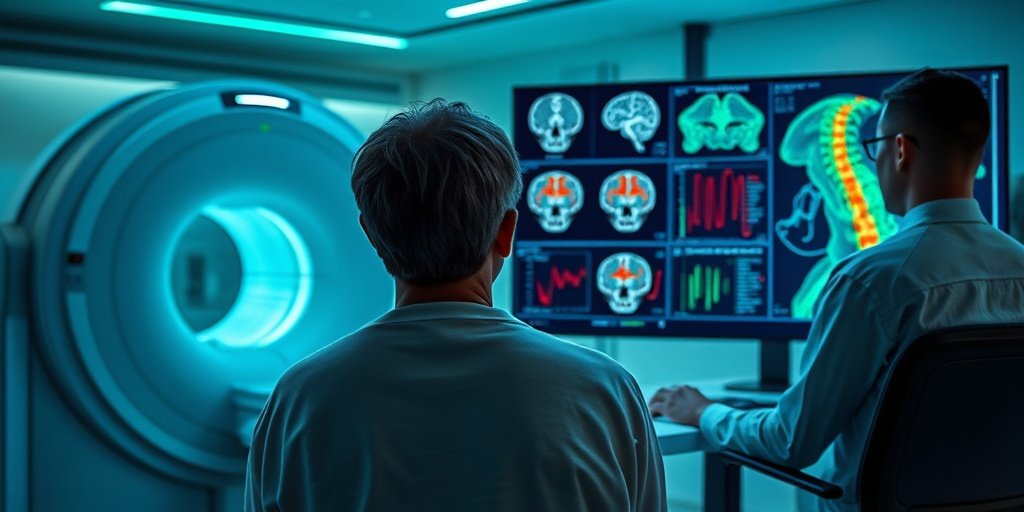⚡ Quick Summary
This review highlights the significant structural and functional changes in motor descending pathways following stroke, emphasizing the need for advanced neuroengineering techniques. Despite progress in neuroimaging and neuromodulation, a breakthrough technique for precise prognosis and tailored treatments remains elusive.
🔍 Key Details
- 📊 Global Impact: Stroke affects approximately 101 million survivors worldwide.
- 🚶♂️ Movement Impairments: Over 60% of stroke survivors experience long-term movement disabilities.
- 🧠 Focus Areas: The review centers on the corticospinal tract (CST) and indirect motor pathways.
- ⚙️ Techniques Reviewed: Neuroimaging, neuromodulation, and electrophysiological approaches.
- 🤖 Future Directions: Emphasis on the integration of artificial intelligence and large multi-modal data registries.
🔑 Key Takeaways
- 🌍 Stroke is a leading cause of adult disability, affecting millions globally.
- 🔍 Structural and functional changes in motor pathways are critical to understanding post-stroke impairments.
- 🧩 Neuroengineering techniques are essential for evaluating these changes.
- ⚠️ Limitations exist in current assessment techniques, hindering clinical practice.
- 💡 AI and data registries could pave the way for groundbreaking advancements in stroke rehabilitation.
- 📈 Precision prognosis and tailored treatments are the ultimate goals of ongoing research.
- 🗣️ Collaboration among disciplines is necessary to overcome existing challenges.

📚 Background
Stroke remains a significant public health challenge, leading to substantial disability among survivors. The resulting movement impairments are often linked to alterations in the motor descending pathways, particularly the corticospinal tract. Understanding these changes is crucial for developing effective rehabilitation strategies and improving the quality of life for stroke survivors.
🗒️ Study
This review synthesizes recent advancements in neuroengineering approaches aimed at assessing the structural and functional changes in motor descending pathways post-stroke. The authors discuss various methodologies, including neuroimaging and neuromodulation, while also addressing the limitations of current techniques and the need for innovative solutions.
📈 Results
The review indicates that while there have been significant strides in neuroimaging and neuromodulation, a clear and practicable technique for assessing post-stroke changes has not yet emerged. The authors argue that integrating artificial intelligence and establishing large multi-modal data registries could lead to a transformative breakthrough in this field.
🌍 Impact and Implications
The findings of this review underscore the urgent need for improved assessment techniques in stroke rehabilitation. By leveraging advanced neuroengineering methods, healthcare professionals can better understand the complexities of motor impairments, ultimately leading to more effective and personalized treatment strategies. The integration of AI and comprehensive data registries holds the potential to revolutionize the standard of care for stroke survivors.
🔮 Conclusion
This review highlights the critical role of neuroengineering in understanding and addressing post-stroke motor impairments. While challenges remain, the potential for artificial intelligence and innovative assessment techniques offers hope for significant advancements in stroke rehabilitation. Continued research and collaboration are essential to unlock new possibilities for improving the lives of stroke survivors.
💬 Your comments
What are your thoughts on the advancements in neuroengineering for stroke rehabilitation? We would love to hear your insights! 💬 Share your comments below or connect with us on social media:
Neuroengineering approaches assessing structural and functional changes of motor descending pathways in stroke.
Abstract
Stroke is a leading cause of adult disability worldwide, with approximately 101 million survivors globally. Over 60% of these individuals live with from long-term, often lifelong, movement impairments that significantly hinder their ability to perform essential daily activities and maintain independence. Post-stroke movement disabilities are highly associated with structural and functional changes in motor descending pathways, particularly the corticospinal tract (CST) and other indirect motor pathways via the brainstem. For decades, neuroengineers have been working to quantitively evaluate the post-stroke changes of motor descending pathways, aiming to establish a precision prognosis and tailoring treatments to post-stroke motor impairment. However, a clear and practicable technique has not yet been established as a breakthrough to change the standard of care for current clinical practice. In this review, we outline recent progress in neuroimaging, neuromodulation, and electrophysiological approaches for assessing structural and functional changes of motor descending pathways in stroke. We also discuss their limitations and challenges, arguing the need of artificial intelligence and large multi-modal data registry for a groundbreaking advance to this important topic.
Author: [‘Williamson JN’, ‘Peng RH’, ‘Sung J’, ‘Rajabtabar Darvish M’, ‘Chen X’, ‘Ali M’, ‘Li S’, ‘Yang Y’]
Journal: Prog Biomed Eng (Bristol)
Citation: Williamson JN, et al. Neuroengineering approaches assessing structural and functional changes of motor descending pathways in stroke. Neuroengineering approaches assessing structural and functional changes of motor descending pathways in stroke. 2025; (unknown volume):(unknown pages). doi: 10.1088/2516-1091/adfeaa